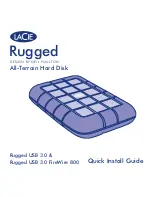
Chapter 3: Subsystem Connection
Other beneficial features of a typical SFP transceiver include a single
power supply, low power dissipation, and hot-swap capability. It is
also important that any transceiver you use meets the FC
performance and reliability specifications.
CAUTION!
The SFP transceiver from Infortrend contains a laser diode featuring
class 1 laser. To ensure continued safety, do not remove any covers
or attempt to gain access to the inside of the product. Refer all
servicing to qualified personnel. The following caution label appears
on your unit.
Location: rear panel of the device
3.1.5
Topology and Configuration Considerations
3.1.5.1 Fibre Channel Topologies
The Fibre Channel standard supports three (3) separate topologies.
They are point-to-point, Fibre Channel Arbitrated Loop (FC-AL), and
fabric switch topologies.
․
Point-to-Point:
Point-to-point topology is the simplest topology.
It is a direct connection between two (2) Fibre Channel devices.
․
FC-AL:
This is the most common topology currently in use. Fibre
Channel devices are all connected to a loop. Each device is
assigned an arbitrated loop physical address (AL_PA). The FC-
AL supports 124 devices in a single loop.
․
Fabric:
The fabric topology supports up to 2
24
Fibre Channel
devices. This topology allows many devices to communicate at
the same time. A Fibre switch is required to implement this
topology.
3.1.5.2 Host-side Topologies
The primary concern for configuring host-side topologies is to avoid
points of failure. It is therefore recommended that the host ports be
connected to at least two (2) HBAs. It is also preferable to connect
the FC RAID subsystems to the host computer(s) through a Fibre
Channel switch.
NOTE:
In order to manage the fault-tolerant data paths and to optimize data
CLASS 1
LASER PRODUCT
3-3
















































